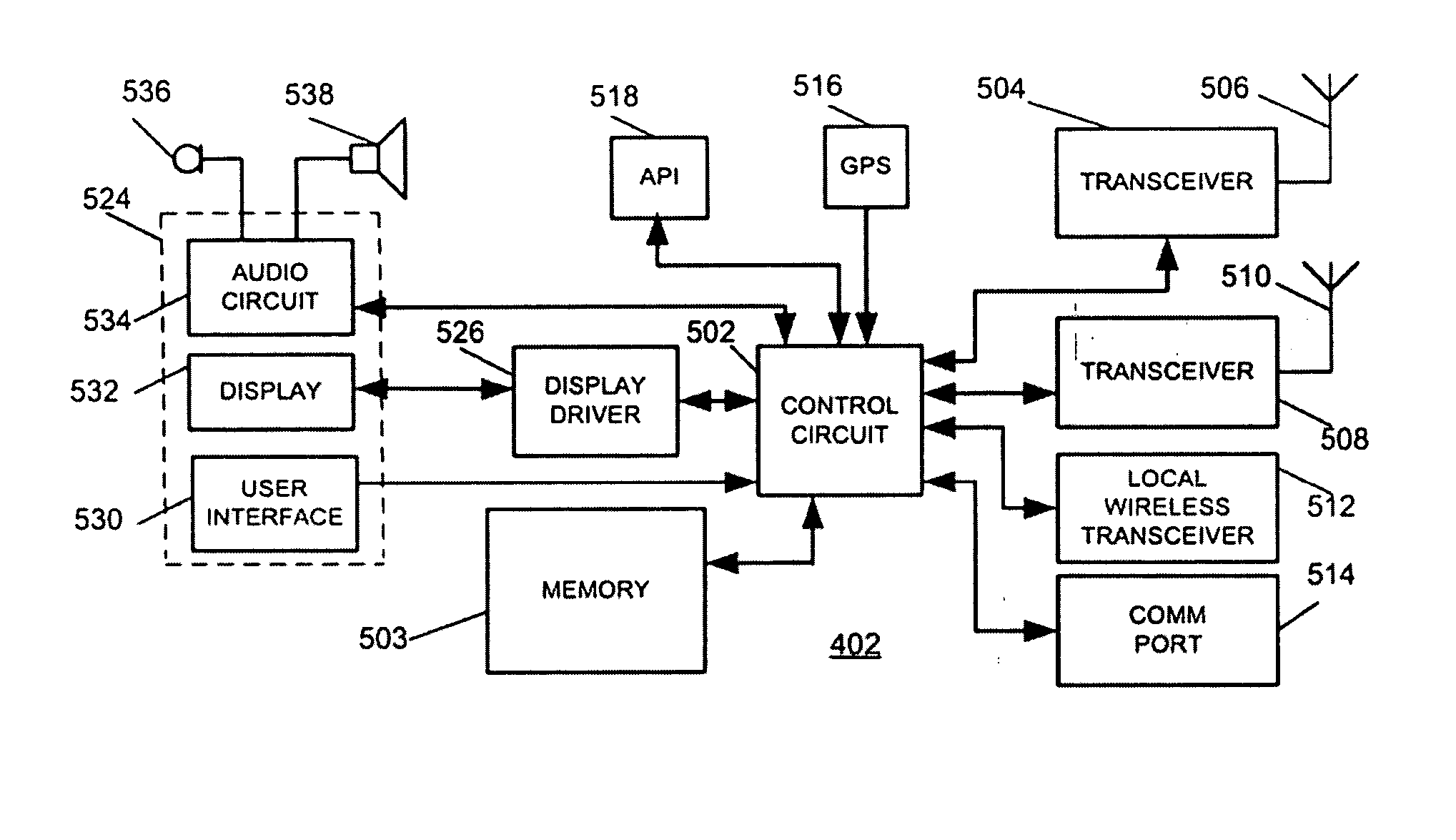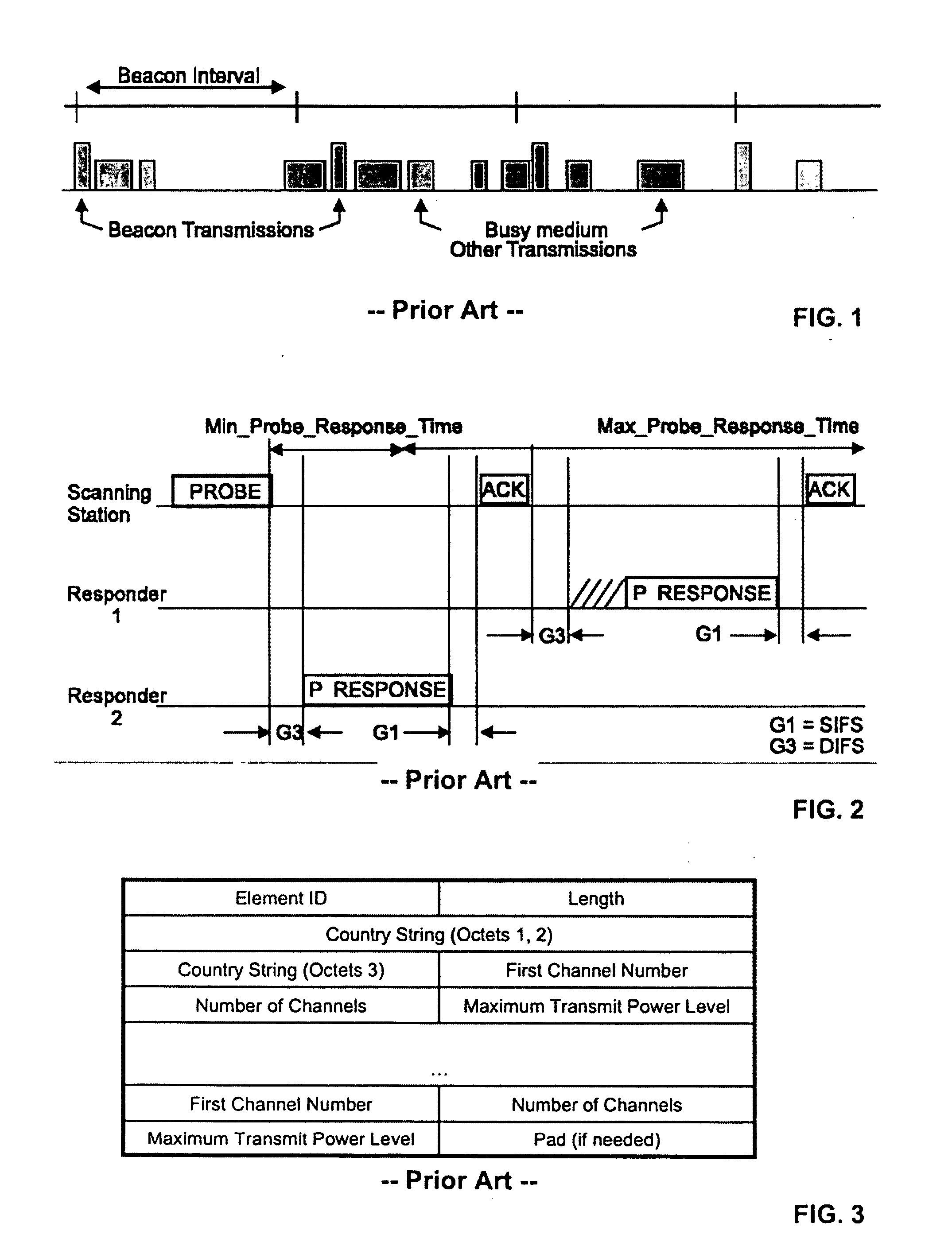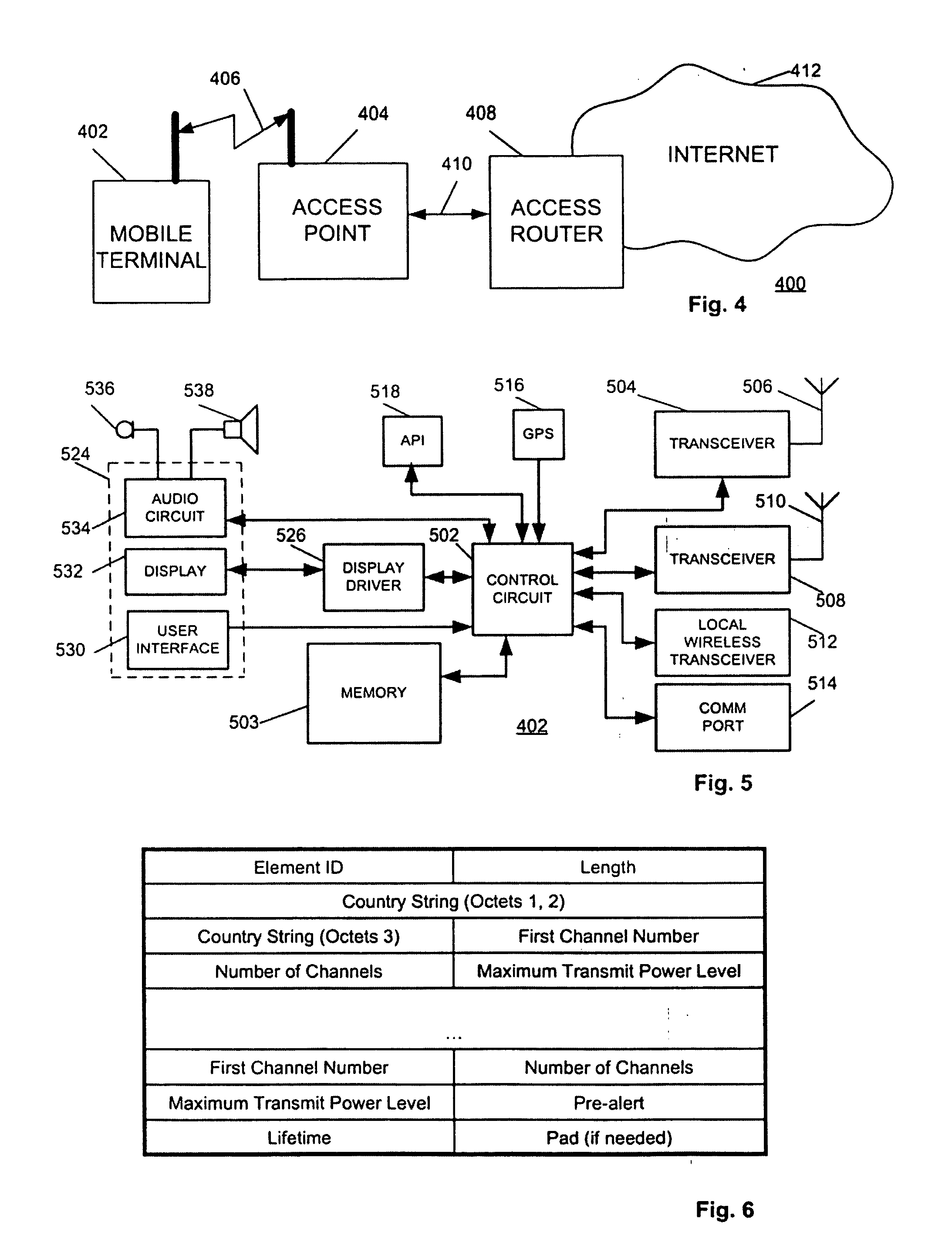System and method for channel scanning in wireless networks
a wireless network and wireless network technology, applied in the field of wireless network method of scanning channels, can solve the problems of long time, disadvantageous passive channel scanning, and inadequacies of passive channel scanning
- Summary
- Abstract
- Description
- Claims
- Application Information
AI Technical Summary
Problems solved by technology
Method used
Image
Examples
Embodiment Construction
[0037] FIG. 4 shows a block diagram of a wireless communication network employing embodiments of the present invention. A wireless station (mobile terminal) 402 is coupled to an access point 404 by a wireless communication link 406. The access point 404 is coupled to an access router 408 by a communication link 410. The access router 408 is coupled to a communication network, such as the Internet 412.
[0038] FIG. 5 shows a block diagram of the wireless station 402 according to one embodiment of the present invention. The wireless station 402 preferably includes a control circuit 502, such as a microprocessor, microcontroller, ASIC or other circuits or integrated circuits used to control the wireless station 402. A memory device 503 could also be coupled to the control circuit 502. The control circuit 502 is also coupled to a first transceiver 504 having an antenna 506, and a second transceiver 508 having an antenna 510. The wireless station 402 could also include a local wireless tra...
PUM
 Login to View More
Login to View More Abstract
Description
Claims
Application Information
 Login to View More
Login to View More - R&D
- Intellectual Property
- Life Sciences
- Materials
- Tech Scout
- Unparalleled Data Quality
- Higher Quality Content
- 60% Fewer Hallucinations
Browse by: Latest US Patents, China's latest patents, Technical Efficacy Thesaurus, Application Domain, Technology Topic, Popular Technical Reports.
© 2025 PatSnap. All rights reserved.Legal|Privacy policy|Modern Slavery Act Transparency Statement|Sitemap|About US| Contact US: help@patsnap.com



